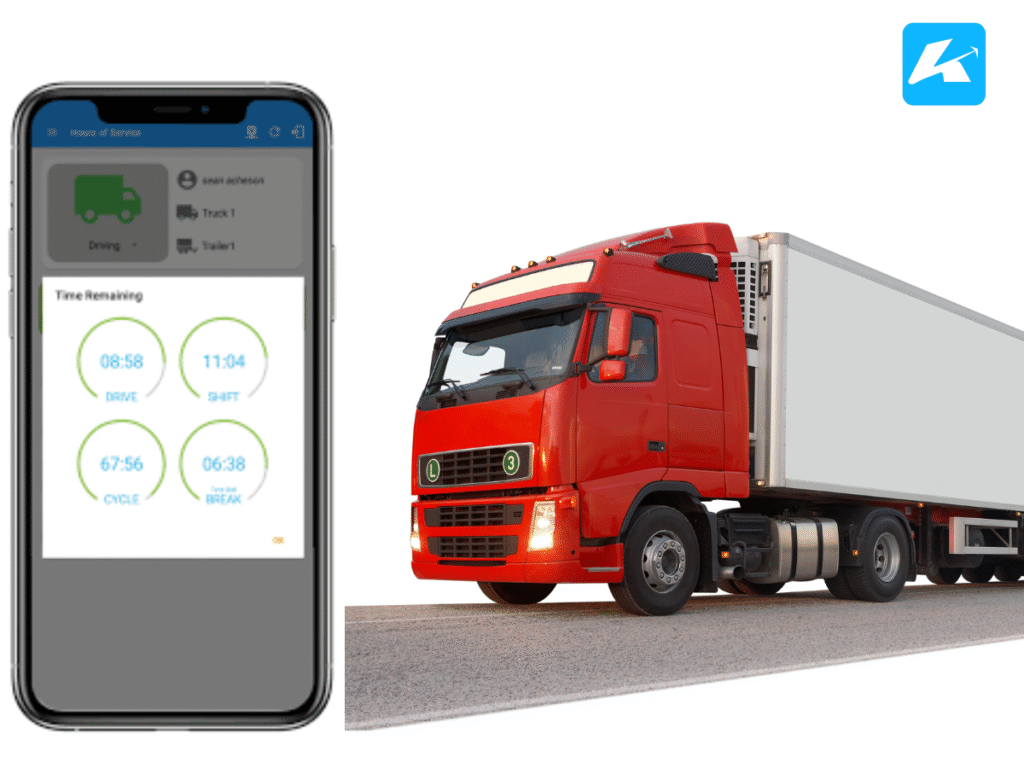If you’re a fleet manager or driver, you’ve likely heard the term “ELD” thrown around a lot. Electronic Logging Devices (ELDs) have transformed how the trucking industry tracks hours of service (HOS), replacing paper logs with digital precision.

But mastering ELD logbooks can feel like learning a new language, especially with strict compliance rules and ever-evolving regulations. Don’t worry—we’ve got you covered.
Here’s a practical guide to understanding ELD logbooks, with tips to simplify compliance and keep your operations running smoothly.
1. Understand What ELDs Do (and Why They Matter)
ELDs are devices that automatically record a driver’s HOS, including driving time, breaks, and off-duty periods, by syncing with a vehicle’s engine.
Mandated by the Federal Motor Carrier Safety Administration (FMCSA) since 2017, ELDs ensure compliance with HOS regulations, which cap driving hours to promote safety and prevent driver fatigue.
Why does this matter? Accurate ELD records help avoid costly fines, reduce the risk of accidents, and streamline inspections.
For fleets, ELDs provide data to optimize routes and schedules. For drivers, they eliminate the hassle of manual logbooks, letting you focus on the road.
But getting the most out of ELDs starts with understanding their features, like real-time tracking and automated alerts for HOS limits.
Pro Tip: Familiarize yourself with FMCSA’s ELD requirements. Ensure your device is on the FMCSA’s registered ELD list to avoid compliance issues.
2. Master Recap Hours for Better Planning
One of the trickiest parts of ELD logbooks is managing recap hours—the process of regaining driving hours as earlier duty periods “roll off” after eight days.
Under FMCSA rules, drivers operating under the 70-hour/8-day cycle can drive up to 11 hours daily and work up to 70 hours over eight days.
As each day passes, the hours from eight days ago are “recaptured,” giving you more available time.
For example, if you drove 10 hours on Monday last week, those hours become available again the following Tuesday.
ELDs make this easier by automatically calculating recap hours, but you need to understand your logs to plan effectively.
A fleet manager might use ELD data to schedule loads that maximize driver availability, while drivers can use it to avoid running out of hours mid-trip.
Action Step: Check your ELD’s recap summary regularly. Many devices display a rolling eight-day total, so you can plan trips without hitting HOS limits.
3. Leverage Split Sleeper Berth Rules
The split sleeper berth provision is a powerful tool for drivers to extend their workday while staying compliant.
This rule allows drivers to split their required 10-hour off-duty rest into two periods—one at least 7 hours in the sleeper berth and another at least 2 hours (on- or off-duty), totaling at least 10 hours.
ELDs track these splits automatically, but understanding how to use them can save time.
For instance, a driver might take a 2-hour break after 5 hours of driving, then rest for 8 hours in the sleeper berth later.
This “splits” the rest period, pausing the 14-hour driving window and giving more flexibility.
However, misusing this rule can lead to violations, so double-check your ELD logs during roadside inspections.
Quick Tip: Practice logging split sleeper periods in your ELD. Ask your fleet manager or broker for guidance on scenarios where splits can maximize your driving time.
4. Use ELD Data to Improve Efficiency
ELDs do more than just track hours—they generate data that can boost efficiency for both drivers and fleets.
For drivers, ELD reports can highlight patterns, like frequent stops that eat into driving time.
For fleets, ELD analytics can reveal trends, such as routes with consistent delays, helping you optimize operations.
Imagine you’re a fleet manager noticing that a driver’s logs show repeated delays on a specific route.
By analyzing ELD data, you might find a better route or adjust pickup times.
Companies like Kargage, based in Jackson, Mississippi, work with fleets to integrate ELD data into logistics planning, ensuring shipments stay on schedule without violating HOS rules.
Best Practice: Invest time in learning your ELD’s reporting features. Many devices offer dashboards that summarize driving patterns, helping you make data-driven decisions.

5. Stay Ahead of Compliance Challenges
Compliance is the backbone of ELD use, but it’s not always straightforward.
Common pitfalls include incorrect log entries, failing to annotate changes (like adverse weather), or misunderstanding rules like personal conveyance.
ELDs help by automating much of the process, but human error can still lead to violations.
To stay compliant, train drivers and fleet managers on ELD use regularly.
During inspections, ensure logs are accurate and include notes for exceptions, like waiting time at a shipper.
Also, keep an eye on FMCSA updates, as regulations can evolve. Recent posts on X highlight how technology simplifies compliance with rules like split sleeper provisions, showing the industry’s focus on staying ahead.
How to Start: Schedule quarterly ELD training sessions. Use FMCSA’s ELD Factsheet and FAQs to stay updated on compliance requirements.
Putting It All Together
ELD logbooks might seem daunting, but they’re a powerful tool for simplifying logistics and ensuring compliance.
By understanding ELD functionality, mastering recap hours, leveraging split sleeper rules, using data for efficiency, and staying compliant, you can turn a regulatory requirement into a competitive advantage.
Whether you’re a driver logging hours or a fleet manager planning loads, ELDs can make your job easier when used effectively.
At Kargage, we’ve seen how ELDs help our clients streamline operations, from matching loads with carriers to ensuring timely deliveries.
But this isn’t about us—it’s about empowering you with the knowledge to navigate ELDs confidently.
Need help finding carriers who use reliable ELD systems? Give us a call at (727) 628-3545 for a quote.
Keep these tips in mind, and you’ll be mastering ELD logbooks in no time.

